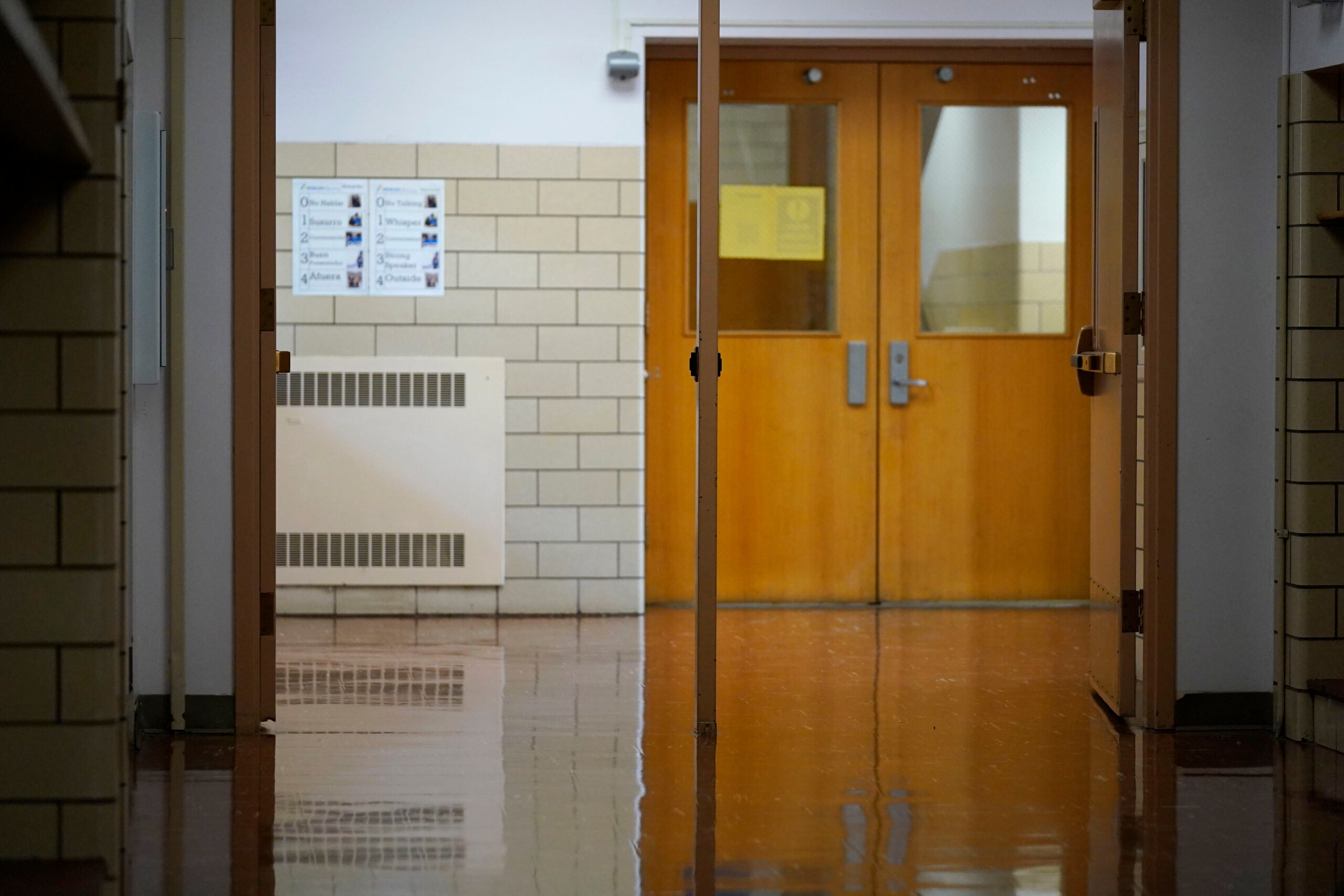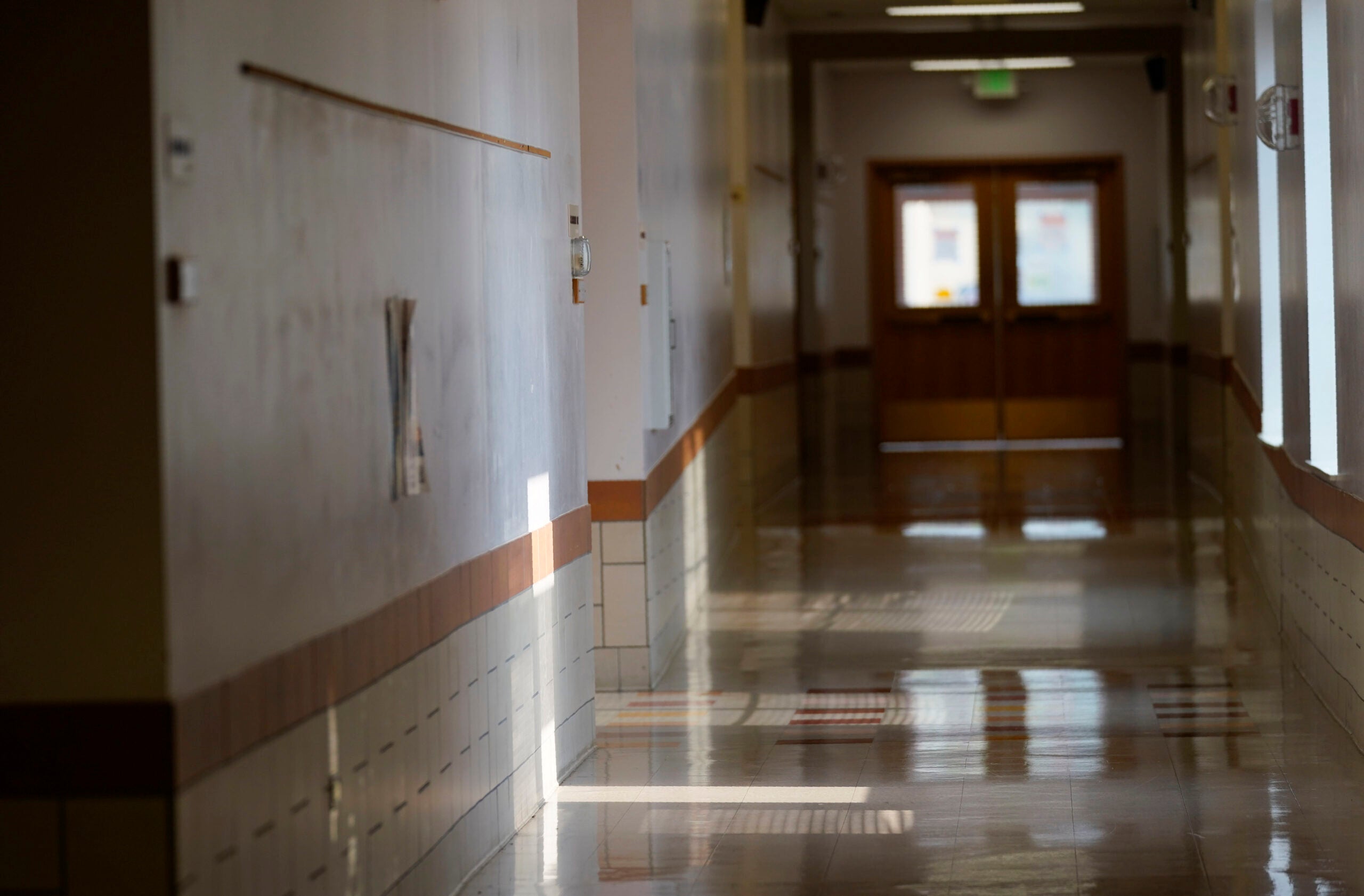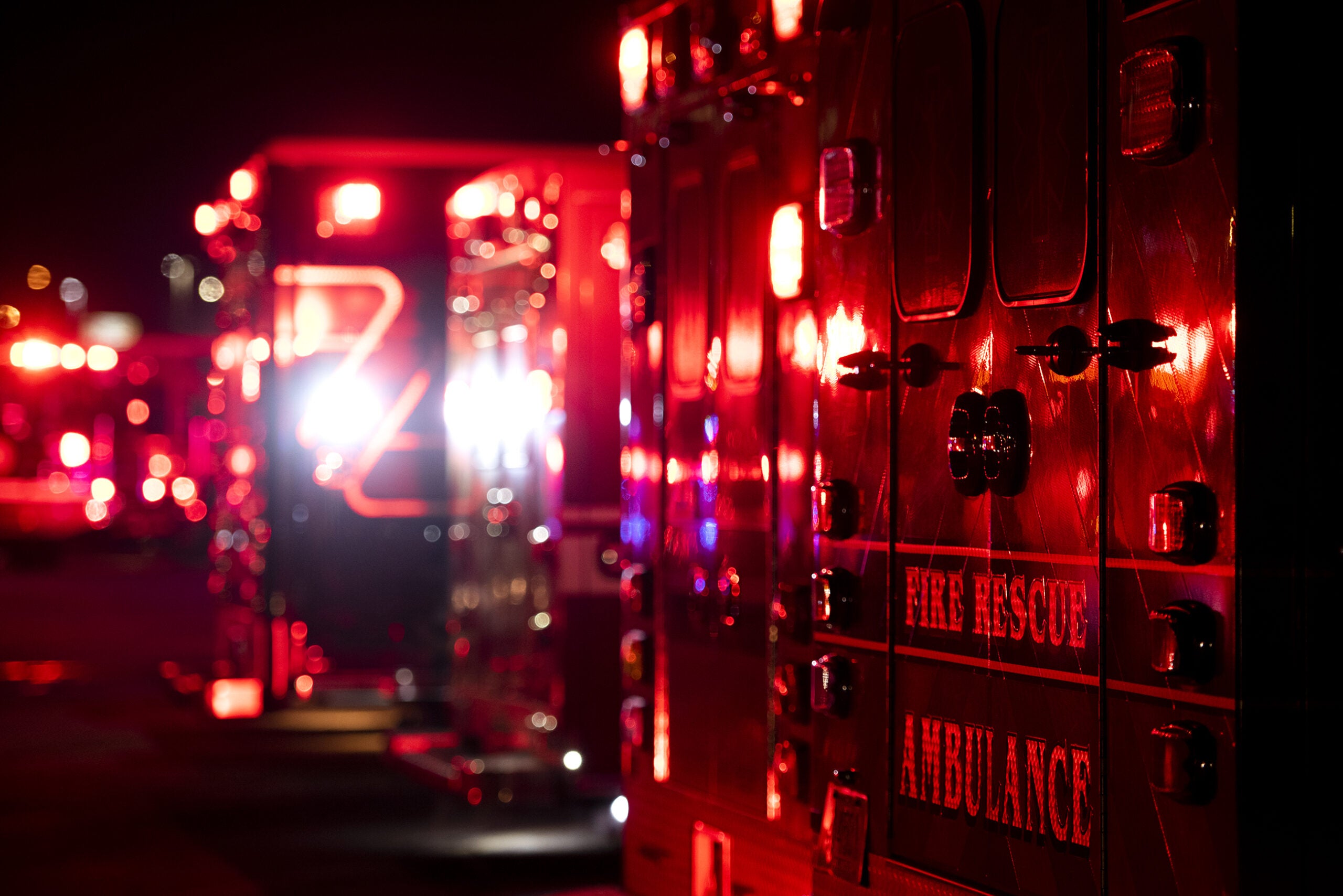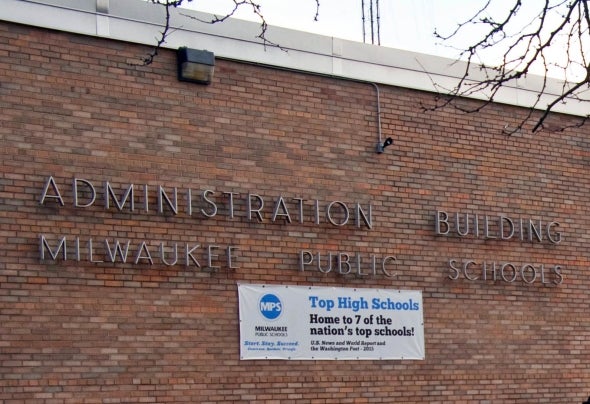A middle school in northwestern Wisconsin was back in session starting Tuesday, more than a month after a chemical exposure incident caused 64 students and staff to seek medical treatment.
A district statement says styrene and other chemicals are no longer present in the building, but some parents say they don’t feel comfortable sending their children back to class.
On Monday, the Spooner Area School District issued a press release saying it would reopen Spooner Middle School Tuesday after a chemical exposure led to an evacuation and dozens of individuals falling ill on Nov. 10.
Stay informed on the latest news
Sign up for WPR’s email newsletter.
Initially, the district pointed to a contractor “coating sewer pipes on the city streets” near the school as the cause of the chemical odor forcing the evacuation. Subsequent press releases don’t mention the utility work.
In the most recent release, district officials said environmental testing has been conducted in the school and “industrial hygiene and occupational medicine reviews of data and reports have also been conducted.”
“In particular, styrene is consistent with the dizziness, light headedness, nausea, shortness of breath and loss of consciousness that was experienced,” said a bullet point in the statement.
The release said the building has been aired out and “these chemicals are no longer present within the school building.”
“We have been told that a single exposure such as this does not constitute a risk for long-term health effects,” read the statement.
District officials declined to comment further on the styrene exposure and the school’s reopening.
For parents like Stacy Metzig, whose eighth-grade daughter Shakayla was treated at a Spooner hospital and had elevated levels of carbon monoxide in her blood, the district’s statements haven’t been enough.
“There needs to be more information, as my daughter got extremely sick and was in the hospital for quite a while,” Metzig said. “And I’m 100 percent not comfortable sending her back.”
Metzig said on Nov. 10, she got a call from the district with a pre-recorded message explaining the evacuation. She said her husband took Shakayla to the hospital and the girl’s eyes were extremely red, her face was red and she was crying because of a bad headache after the exposure.
“You’re saying that the school is closed and then all of a sudden we get a thing stating that you’re reopening,” Metzig said of the school. “But yet, you’re not doing any comments on anything? So what exactly was it? What caused it? How did it go away?”
WPR requested copies of the environmental testing results at the school under Wisconsin’s open records law on Dec. 13, but was denied. A district executive assistant said based on guidance from the district’s legal counsel, the documents wouldn’t be provided due to an ongoing investigation.
Another request for the records was sent Tuesday. WPR was told the district is focusing on reopening the middle school, but “the lawyers are reviewing the requests for the release of records.”
Lauren Marley’s sixth-grade daughter Kaylie was also treated at a Spooner hospital on Nov. 10 before being transferred to Essentia Health-St. Mary’s Children’s Hospital in Duluth, Minnesota. Marley said her daughter became unresponsive three times when she was being treated and also had elevated levels of carbon monoxide in her blood.
“Why aren’t we getting adequate answers?” asked Marley. “Why haven’t they reached out to the parents for the children that were in critical care?”
Marley said she has contacted an attorney that specializes in carbon monoxide poisoning. She and Metzig said they feel like the district is covering something up.
“Yes, they might send out emails,” said Marley. “They might just send out whatever emails that they think are sufficient enough and keep calling it an epoxy odor, when I’m feeling this (is) way more than an epoxy odor.”
While the district’s Monday statement about the styrene exposure didn’t mention a source, a $185,511 contract between Michels Pipe Services, based in Brownsville and the city of Spooner, shows the company was using styrene coated felt sleeves to line the inside of sewer pipes in a process called cured-in-place-pipe lining, or CIPP, next to the school the day it was evacuated.
Voicemails left by WPR seeking comment from Michels Corp., which owns Michels Pipe Services, weren’t returned.
Andrew Whelton, a professor of civil, environmental and ecological engineering at Purdue University and the director of the Health Plumbing Consortium, said the exposure in Spooner shouldn’t have happened.
“So, first and foremost, the parents have every right to be upset because the incident was wholly preventable if the emissions entered the building,” said Whelton. “If the emissions entered the building, it was because the state regulatory agency did not provide oversight under the Clean Air Act to prevent thousands of pounds of (volatile organic compound) emissions into the air by the contractor.”
Studies show CIPP linked to styrene emissions in the past
The state Department of Natural Resources and the U.S. Environmental Protection Agency list styrene as a pollutant that is regulated under the Clean Air Act and Clean Water Act.
Whelton and colleagues have published a study pointing to more than 100 instances where contractors lining pipes caused accidental waste discharges into nearby buildings.
He said styrene is also used in manufacturing processes like boat making, but companies are required to capture and treat waste materials. He said the CIPP process is essentially making plastic neighborhood water or sewer systems, and contractors often get a pass on venting waste materials into the air.
“They’re not legally allowed to pollute, but they do, because Clean Air Act agencies don’t generally understand the issue,” said Whelton.
A 2005 health consultation conducted in Milwaukee by the U.S. Department of Health and Human Services found that contractors using the CIPP process to line a brick sewer caused styrene vapor to enter the Schlitz office building through cracks in the building’s foundation.
“Shortly after the start of the re-lining project, building occupants experienced irritant symptoms that were severe enough that they could no longer work in the building,” the report says. “A strong odor consistent with styrene was present. Measured levels of styrene exceeded the acceptable ATSDR chronic (long term) exposure levels. Strong irritant symptoms experienced by building occupants correlated with the presence of styrene and other volatile organic compounds in the building.”
Wisconsin Public Radio, © Copyright 2024, Board of Regents of the University of Wisconsin System and Wisconsin Educational Communications Board.






